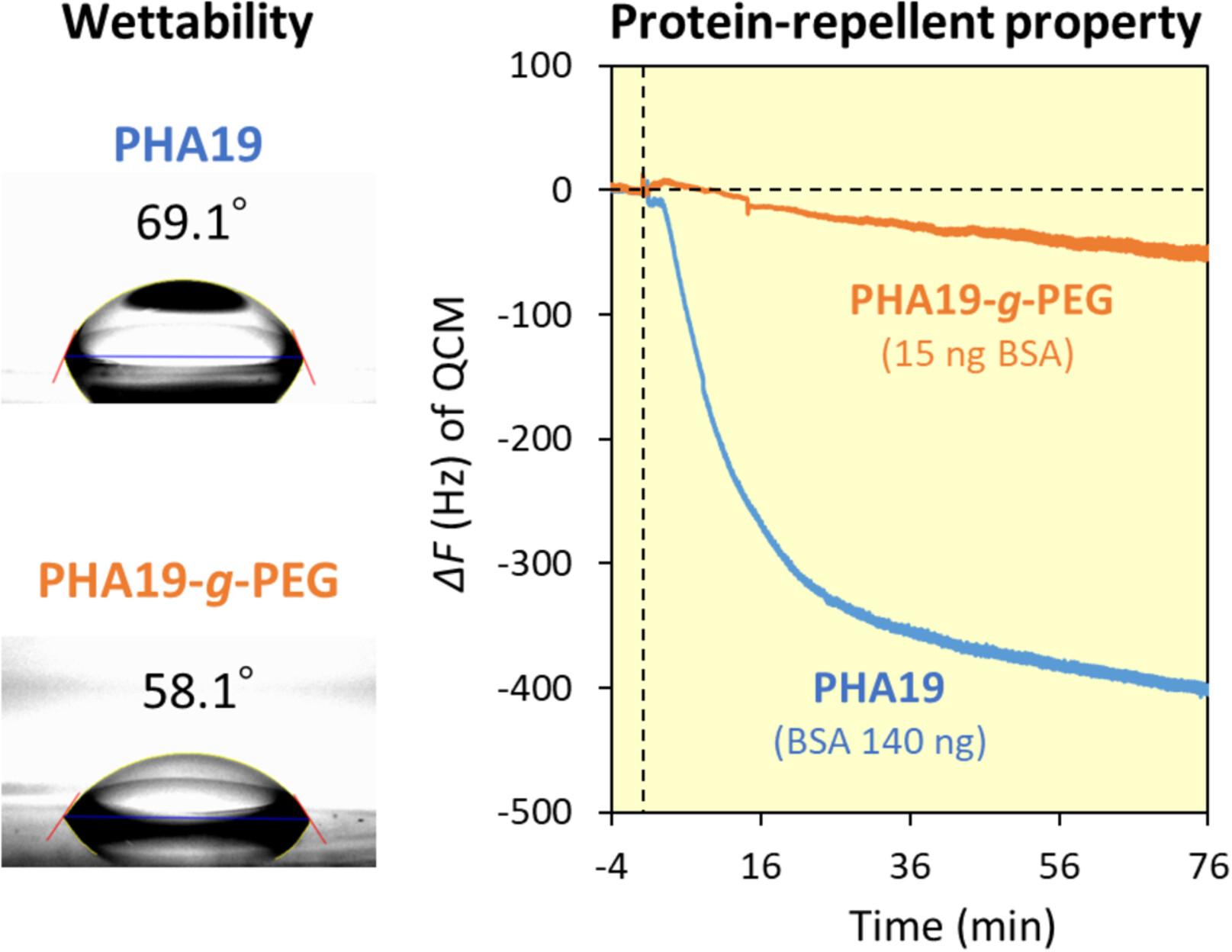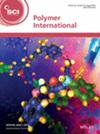Yuki Miyahara, Ayata Nakagawa, Yusuke Nakata, Christopher T. Nomura, Takeharu Tsuge
求助PDF
{"title":"巯基反应接枝聚乙二醇对聚羟基烷酸酯的化学改性","authors":"Yuki Miyahara, Ayata Nakagawa, Yusuke Nakata, Christopher T. Nomura, Takeharu Tsuge","doi":"10.1002/pi.6747","DOIUrl":null,"url":null,"abstract":"<p>Polyhydroxyalkanoates (PHAs) are biodegradable thermoplastics synthesized from renewable biomass resources by various microbes. They have garnered significant attention owing to their superior biodegradability in natural environments compared to other biodegradable plastics. However, preserving their properties while preventing biodegradation during use as plastic material is crucial. In this study, polyethylene glycol (PEG)-grafted PHAs were investigated for the development of biodegradable materials with controlled surface properties. To this end, PHA copolymers containing 6–19 mol% of 3-hydroxy-4-pentenoate (3H4PE), which features an unsaturated side chain as a site for chemical modification, were synthesized using recombinant <i>Escherichia coli</i> and 4-pentenoic acid as 3H4PE precursors. Thiol-PEG (MW 2000) was then grafted onto the PHA at the unsaturated side chain via thiol-ene ‘click’ chemistry reactions. Although the thermal properties of the PEG-grafted PHA showed minimal changes compared with those of the unmodified PHA copolymers, the PEG-grafted PHA films exhibited increased wettability and excellent protein-repellent properties. Furthermore, when biodegradability was tested on an agar plate containing PEG-grafted PHA, the PHA-degrading bacteria did not form clear zones around their colonies when the PEG content was 12 wt%. These results suggest that PEG grafting effectively alters the properties of PHA, offering a promising strategy for controlling its biodegradability and its thermal and antifouling properties. © 2025 Society of Chemical Industry.</p>","PeriodicalId":20404,"journal":{"name":"Polymer International","volume":"74 10","pages":"888-897"},"PeriodicalIF":3.6000,"publicationDate":"2025-01-21","publicationTypes":"Journal Article","fieldsOfStudy":null,"isOpenAccess":false,"openAccessPdf":"","citationCount":"0","resultStr":"{\"title\":\"Polyethylene glycol grafting by thiol-ene reaction for the chemical modification of polyhydroxyalkanoates\",\"authors\":\"Yuki Miyahara, Ayata Nakagawa, Yusuke Nakata, Christopher T. Nomura, Takeharu Tsuge\",\"doi\":\"10.1002/pi.6747\",\"DOIUrl\":null,\"url\":null,\"abstract\":\"<p>Polyhydroxyalkanoates (PHAs) are biodegradable thermoplastics synthesized from renewable biomass resources by various microbes. They have garnered significant attention owing to their superior biodegradability in natural environments compared to other biodegradable plastics. However, preserving their properties while preventing biodegradation during use as plastic material is crucial. In this study, polyethylene glycol (PEG)-grafted PHAs were investigated for the development of biodegradable materials with controlled surface properties. To this end, PHA copolymers containing 6–19 mol% of 3-hydroxy-4-pentenoate (3H4PE), which features an unsaturated side chain as a site for chemical modification, were synthesized using recombinant <i>Escherichia coli</i> and 4-pentenoic acid as 3H4PE precursors. Thiol-PEG (MW 2000) was then grafted onto the PHA at the unsaturated side chain via thiol-ene ‘click’ chemistry reactions. Although the thermal properties of the PEG-grafted PHA showed minimal changes compared with those of the unmodified PHA copolymers, the PEG-grafted PHA films exhibited increased wettability and excellent protein-repellent properties. Furthermore, when biodegradability was tested on an agar plate containing PEG-grafted PHA, the PHA-degrading bacteria did not form clear zones around their colonies when the PEG content was 12 wt%. These results suggest that PEG grafting effectively alters the properties of PHA, offering a promising strategy for controlling its biodegradability and its thermal and antifouling properties. © 2025 Society of Chemical Industry.</p>\",\"PeriodicalId\":20404,\"journal\":{\"name\":\"Polymer International\",\"volume\":\"74 10\",\"pages\":\"888-897\"},\"PeriodicalIF\":3.6000,\"publicationDate\":\"2025-01-21\",\"publicationTypes\":\"Journal Article\",\"fieldsOfStudy\":null,\"isOpenAccess\":false,\"openAccessPdf\":\"\",\"citationCount\":\"0\",\"resultStr\":null,\"platform\":\"Semanticscholar\",\"paperid\":null,\"PeriodicalName\":\"Polymer International\",\"FirstCategoryId\":\"92\",\"ListUrlMain\":\"https://scijournals.onlinelibrary.wiley.com/doi/10.1002/pi.6747\",\"RegionNum\":4,\"RegionCategory\":\"化学\",\"ArticlePicture\":[],\"TitleCN\":null,\"AbstractTextCN\":null,\"PMCID\":null,\"EPubDate\":\"\",\"PubModel\":\"\",\"JCR\":\"Q2\",\"JCRName\":\"POLYMER SCIENCE\",\"Score\":null,\"Total\":0}","platform":"Semanticscholar","paperid":null,"PeriodicalName":"Polymer International","FirstCategoryId":"92","ListUrlMain":"https://scijournals.onlinelibrary.wiley.com/doi/10.1002/pi.6747","RegionNum":4,"RegionCategory":"化学","ArticlePicture":[],"TitleCN":null,"AbstractTextCN":null,"PMCID":null,"EPubDate":"","PubModel":"","JCR":"Q2","JCRName":"POLYMER SCIENCE","Score":null,"Total":0}
引用次数: 0
引用
批量引用




 求助内容:
求助内容: 应助结果提醒方式:
应助结果提醒方式:


